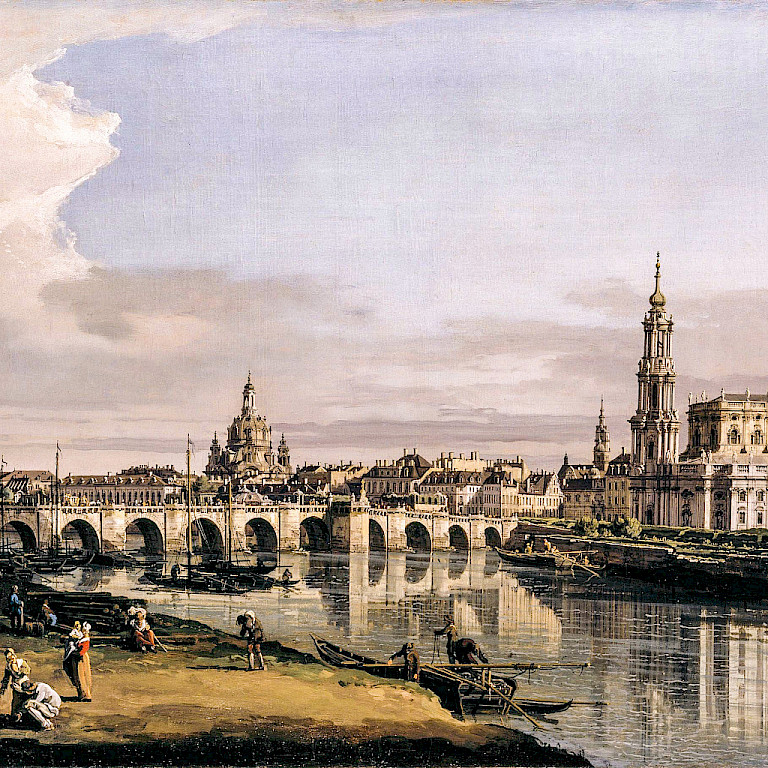
Bernardo Bellotto, Dresden vom rechten Elbufer unterhalb der Augustusbrücke, 1750
gemeinfrei
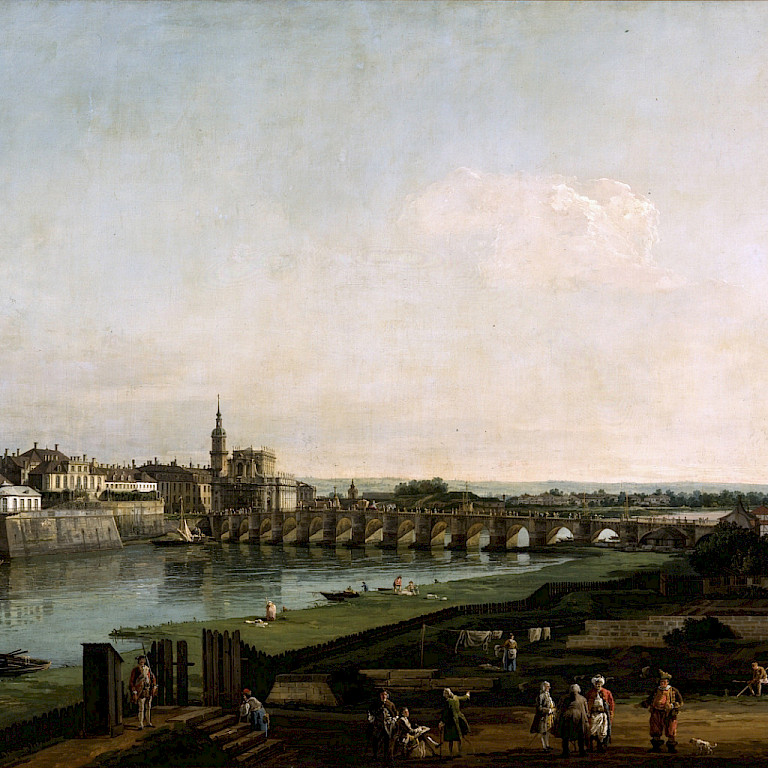
Bernardo Bellotto, Dresden vom rechten Elbufer oberhalb der Augustusbrücke, 1747
gemeinfrei
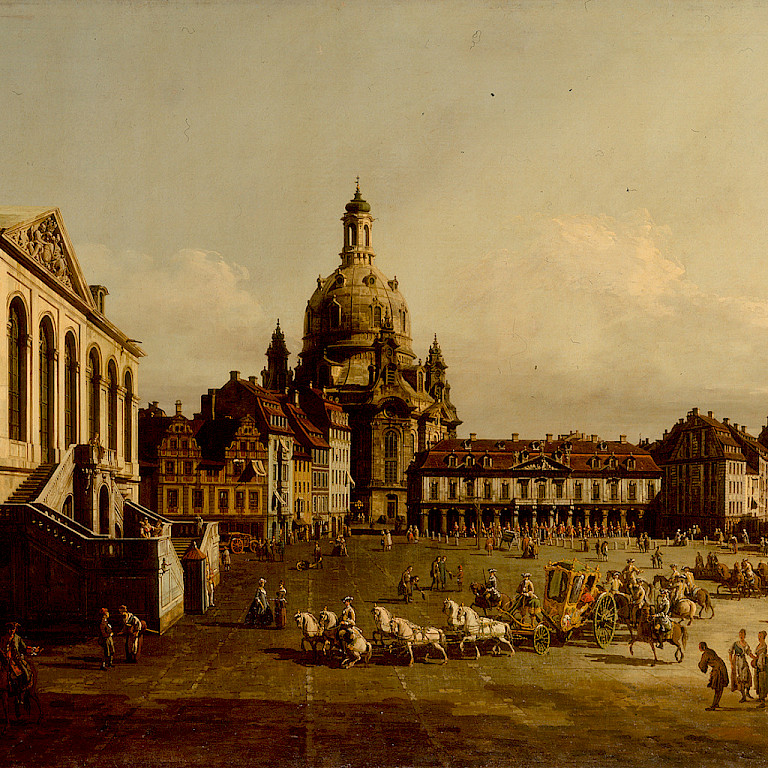
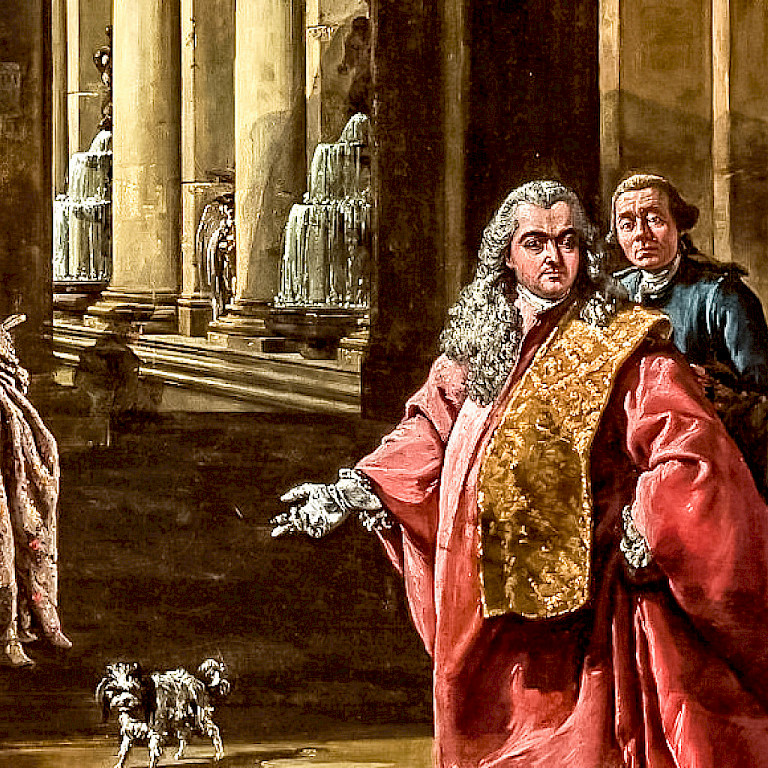
Bernardo Bellotto, Selbstbildnis in venezianischer Adelstracht, 1765
gemeinfrei
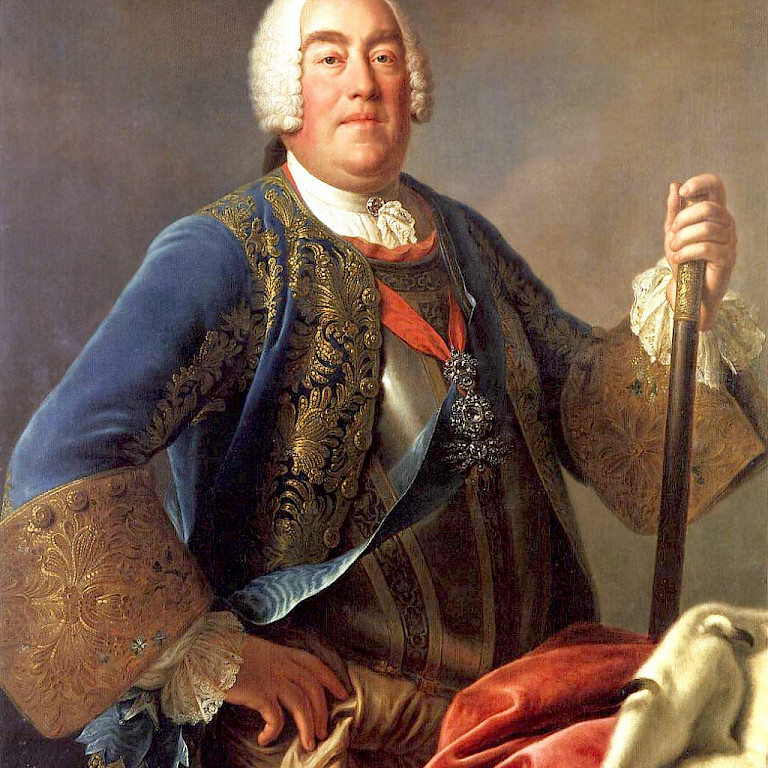
Friedrich August III, Porträt von Antonio Rotari, 1755
gemeinfrei
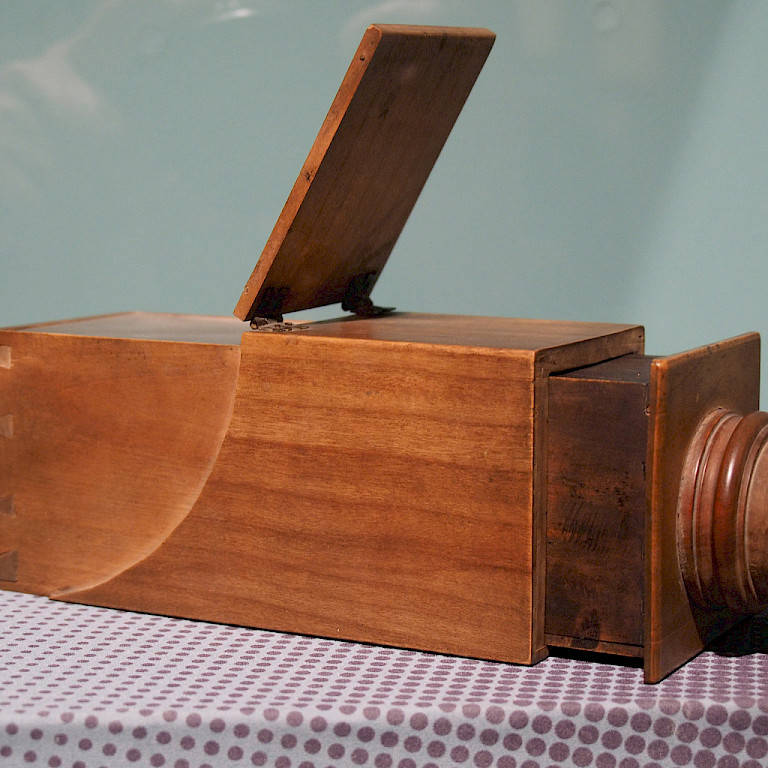
Goethes tragbare Camera Obscura, um 1800
Hajotthu/Wikipedia
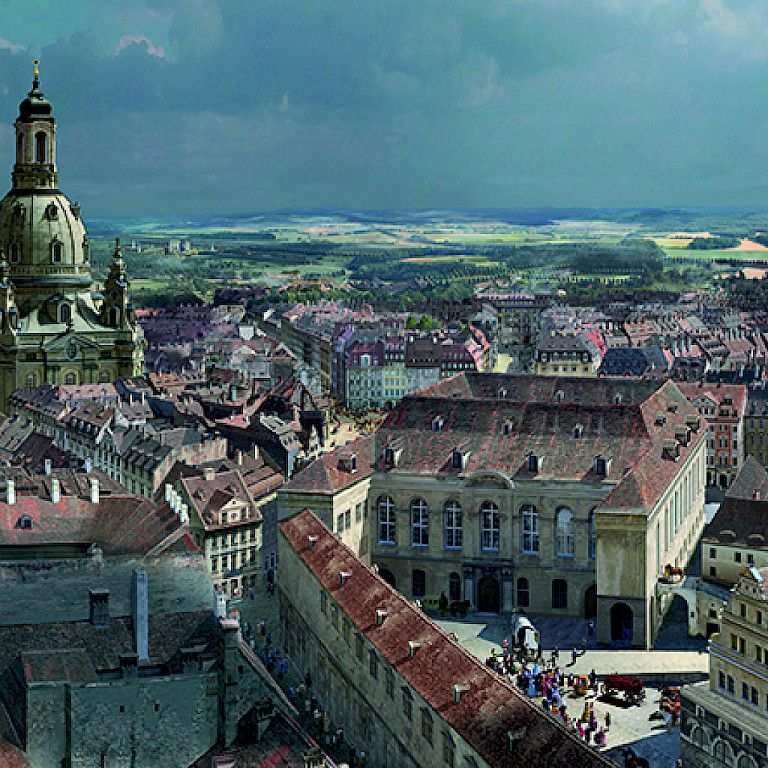
Die Dresdner Altstadt mit Frauenkirche
Foto: Asisi Panometer
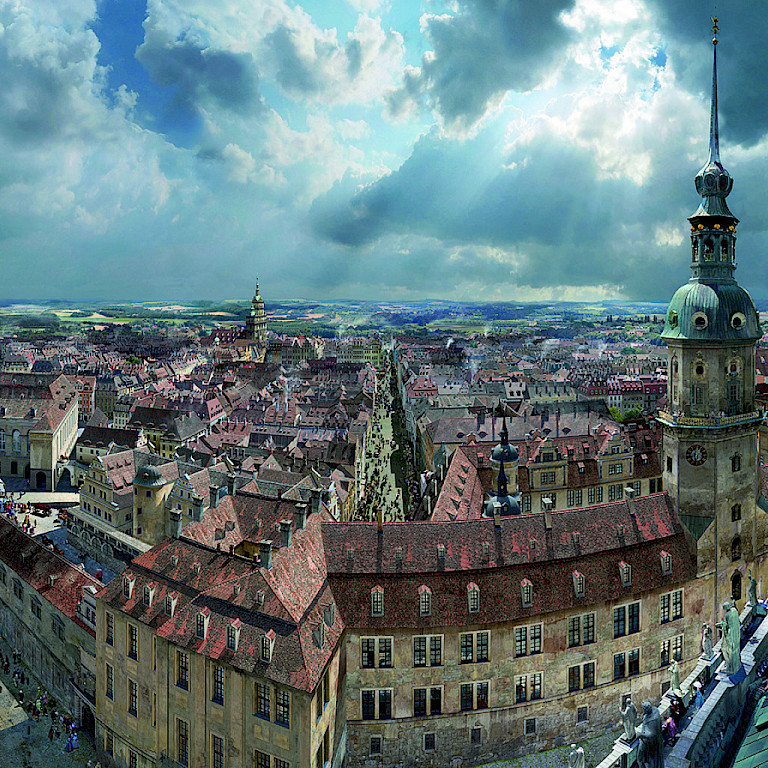
Blick von der Hofkirche auf den Hausmannsturm
Foto: Asisi Panometer
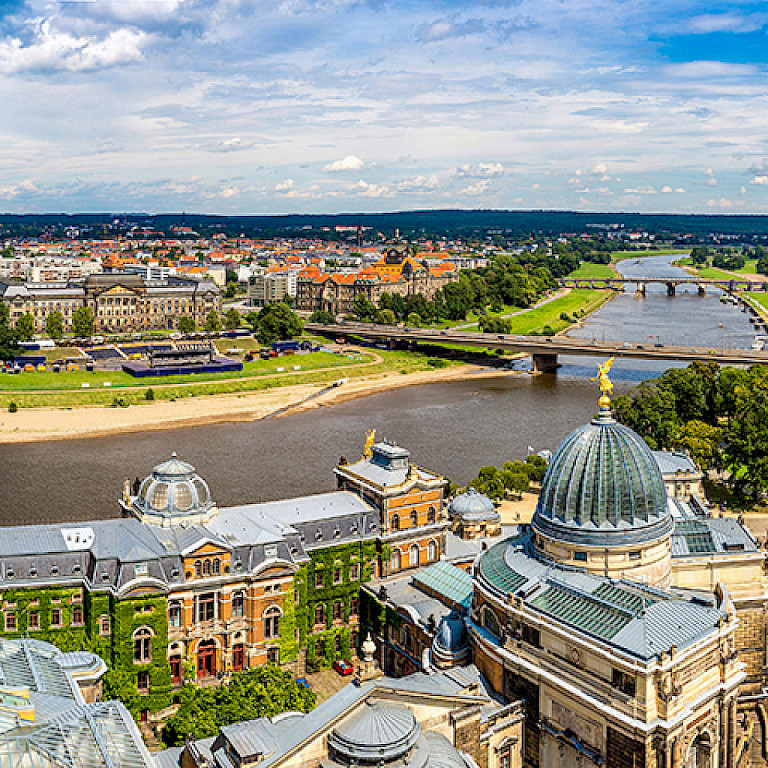
Blick über Dresden
Sergii Figurnyi/stock.adobe.com
04 CANALETTO AND ASISI
Before Yadegar Asisi could design his panorama of Dresden during the baroque age, he had to imagine what the city could have looked like almost 300 years ago. Pictures painted by the artist Bernado Bellotto, better know as Canaletto, helped him. The venetian artist settled in Dresden in 1747 where he worked as court painter for Augustus the Strong’s son, Elector Frederick Augustus the second.
During this time, Canaletto created 14 city views for the King all from different perspectives. They were the so-called “vedutas“. The artist made sketches first that he later put together in his studio. He probably used a camera obscura, the predecessor of the modern-day camera.
Here we are standing in front of the most well-known of these: the Caneletto-view. The picture – a replica of the original painting in the Old Masters’ picture gallery – shows Dresden from the banks of the river Elbe just down from the Augustus Bridge. The version of the veduta on exhibition here was done about five years after the painter had arrived in the city. In the original version, the noticeable building on the left in the painting, the Brühl’s Belvedere built in 1787, cannot be seen.
But how does Yadegar Asisi create his panorama? Basically, his working method is similar to that of Canaletto. It all starts with a current view of Dresden, taken with a digital camera. On this basis, Asisi selects the details of his image. Detail shots of historical buildings from all over Europe make the architecture look as realistic as possible. However, Canaletto's paintings are often not enough as a model. For the reconstruction, research in archives, libraries and museums was required.
Something else unifies the pictures of Bernado Bellotto and Yadegar Asisi: the focus on the inhabitants of the city, who are not just decoration but people who tell stories. These scenes are created during special photo shoots with people in historical costumes.
The panorama is a homage to Canaletto, which is why the artist should not be missing in the picture. With a pencil and sketch pad he sits full of energy on the fortress wall of the Bastion Sol, drawing. His old colleague, the painter Johann Alexander Thiele, points to a further interesting view of the city, which Canaletto would use for one of his vedutas. And Yadegar Asisi welcomes you afterwards in his panorama picture from the Hausmannsturm of the Royal Palace.